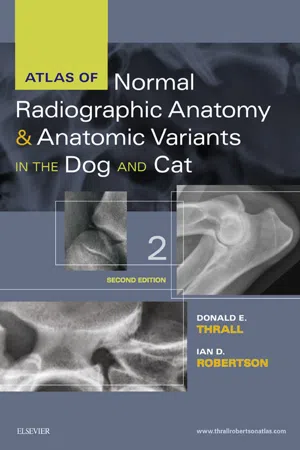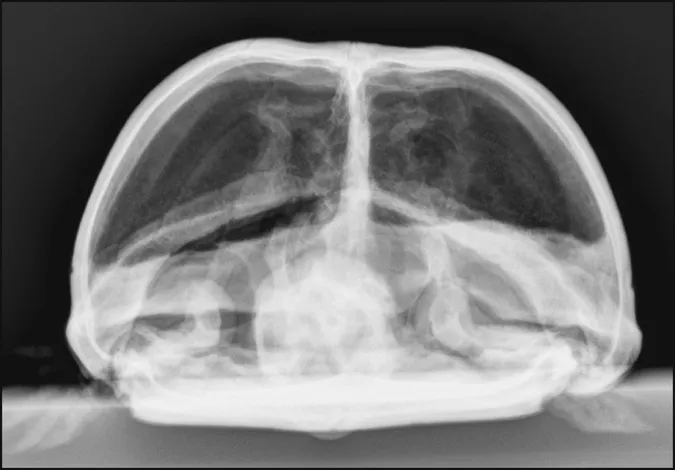
Atlas of Normal Radiographic Anatomy and Anatomic Variants in the Dog and Cat - E-Book
- 320 pages
- English
- ePUB (mobile friendly)
- Available on iOS & Android
Atlas of Normal Radiographic Anatomy and Anatomic Variants in the Dog and Cat - E-Book
About This Book
Equip yourself to make accurate diagnoses and achieve successful treatment outcomes with this highly visual comprehensive atlas. Featuring a substantial number of new high contrast images, Atlas of Normal Radiographic Anatomy and Anatomic Variants in the Dog and Cat, 2nd Edition provides an in-depth look at both normal and non-standard subjects along with demonstrations of proper technique and image interpretations. Expert authors Donald E. Thrall and Ian D. Robertson describe a wider range of "normal" as compared to competing books — not only showing standard dogs and cats, but also non-standard subjects such as overweight and underweight pets and animals with breed-specific variations. Every body part is put into context with a textual description to help explain why a structure appears as it does in radiographs, and enabling practitioners to appreciate variations of normal that are not included, based on an understanding of basic radiographic principles.
- Radiographic images of normal or standard prototypical animals are supplemented by images of non-standard subjects exhibiting breed-specific differences, physiologic variants, or common congenital malformations.
- Images that depict a wider range of "normal" — such as images that detail the natural growth and aging characteristics of normal pediatric and senior animals — prevents clinical under- and over-diagnosing.
- In-depth coverage of patient positioning and radiographic exposure guidelines assist clinicians in producing the very best results.
- Unlabeled radiographs along side labeled counterparts clarifies important anatomic structures of clinical interest.
- High-quality digital images provide excellent contrast resolution and better visibility of normal structures to assist clinicians in making accurate diagnoses.
- Brief descriptive text and explanatory legends accompany all images to help put concepts into the proper context.
- An overview of radiographic technique includes the effects of patient positioning, respiration, and exposure factors.
- NEW! Companion website features additional radiographic CT scans and more than 100 questions with answers and rationales.
- NEW! Additional CT and 3D images have been added to each chapter to help clinicians better evaluate the detail of bony structures.
- NEW! Breed-specific images of dogs and cats are included throughout the atlas to help clinicians better understand the variances in different breeds.
- NEW! Updated material on oblique view radiography provides a better understanding of an alternative approach to radiography, particularly in fracture cases.
- NEW! 8.5" x 11" trim size makes the atlas easy to store.
Frequently asked questions
Information
Basic Imaging Principles and Physeal Closure Time

How to Use This Atlas
What Is Normal?
Why Are Computed Tomography Images Included in This Atlas?
Radiographic Terminology
Table of contents
- Cover image
- Title page
- Table of Contents
- Copyright
- Preface
- Acknowledgments
- The Images
- 1 Basic Imaging Principles and Physeal Closure Time
- 2 The Skull
- 3 The Spine
- 4 The Thoracic Limb
- 5 The Pelvic Limb
- 6 The Thorax
- 7 The Abdomen
- Index
- Color Plate